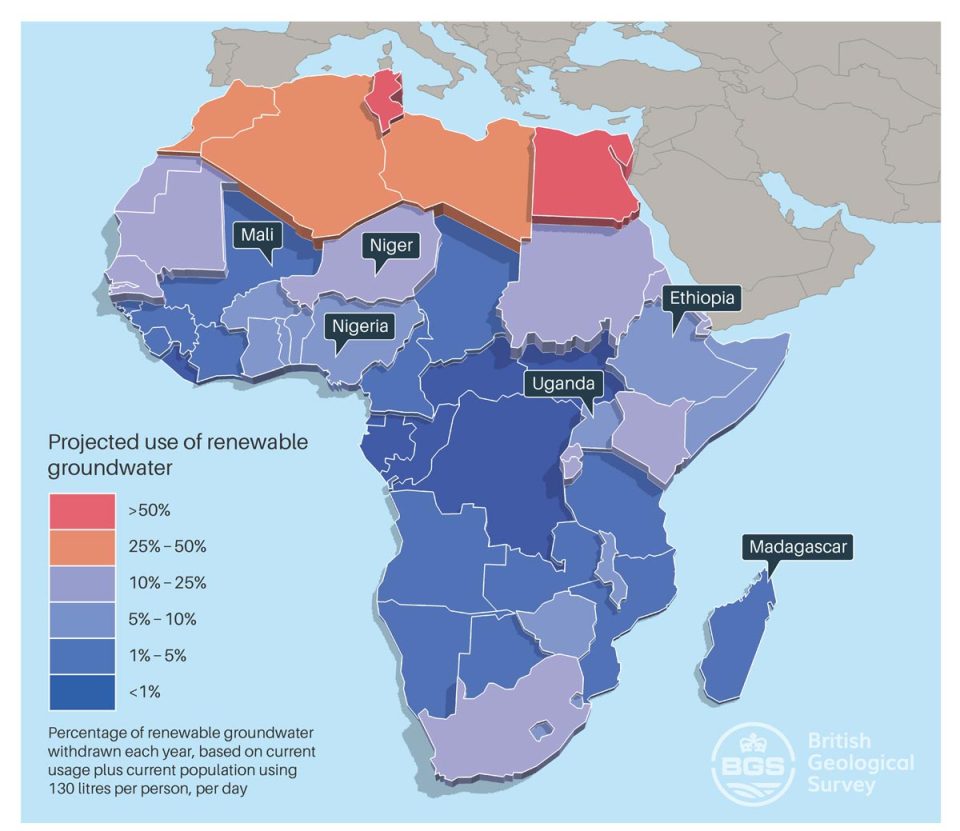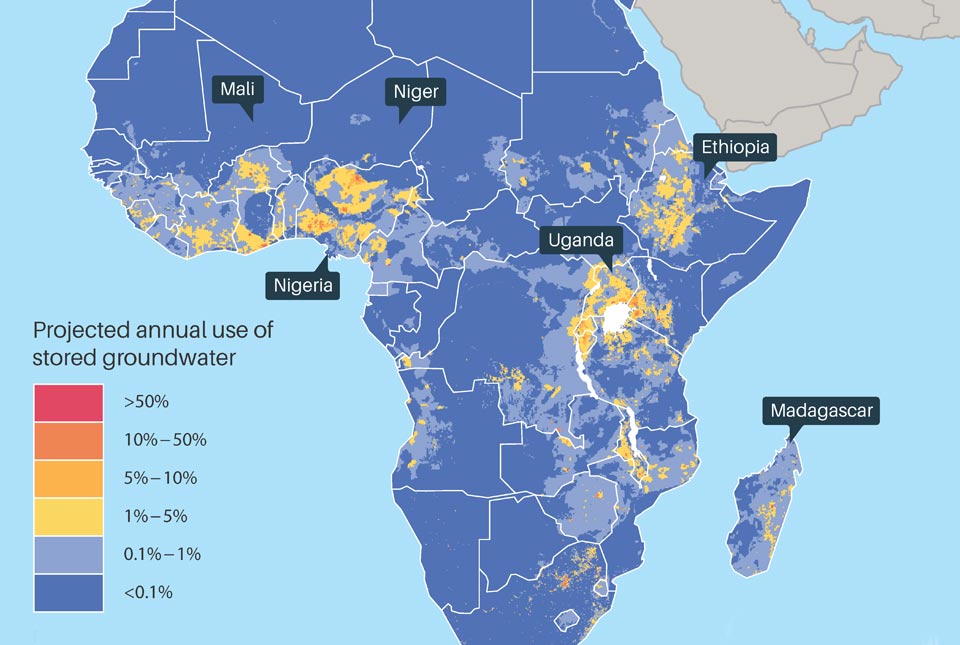A tale of two groundwaters
Why the United Nations 2023 Water Conference needs to know more about groundwater.
21/03/2023
The UN Water Conference in New York on 22-24 March, is billed as the most important water event in a generation. The conference will review progress halfway through the International Decade for Action on Water for Sustainable Development and encourage new commitments, pledges and actions by governments and all stakeholders towards achieving Sustainable Development Goal 6: access to water and sanitation for all. Access to water is also needed to achieve many other Sustainable Development Goals, but progress is alarmingly off track. It is estimated that a quarter of the global population use unsafe drinking water sources, with water sources becoming increasingly polluted and overexploited.
Developing and protecting groundwater is fundamental to achieving water related targets, but groundwater is out of sight and therefore often invisible to public and politician alike. Nearly all unfrozen freshwater on the earth is groundwater (>97%), locked away in the rocks beneath our feet. Excess rainfall not used by plants, or flows into rivers, infiltrates through the soil to the rocks beneath, where it flows through small pore spaces between grains and crystals, or through cracks and fractures, to reappear in rivers, springs or wetlands – years, centuries or even millennia later.


Nearly half the world’s population relies on groundwater for drinking, usually accessed from boreholes or wells – and much more is pumped out to help with industry and irrigation. But groundwater use is not even across the globe and different strategies are required to both unlock its potential and protect it from overuse and pollution.
The story in Africa is largely one of great potential
Many people in countries south of the Sahara lack access to even basic water services. Developing groundwater offers the most realistic way of meeting that need, particularly in dispersed rural communities. In the same way, there is considerable potential for small scale irrigation to help with food security and build resilience against drought. What is needed is a step change in investment in finding groundwater, developing appropriate water supplies, and managing both the resource and individual water services.

The potential for groundwater to supply each person in Africa with 130 litres per day – based on BGS data and analysis https://iopscience.iop.org/article/10.1088/1748-9326/abd661; https://nora.nerc.ac.uk/id/eprint/532313/

The potential for groundwater to supply each person in Africa with 130 litres per day – based on BGS data and analysis https://iopscience.iop.org/article/10.1088/1748-9326/abd661; https://nora.nerc.ac.uk/id/eprint/532313/
Here at the British Geological Survey we have been working with partners such as WaterAid and UNICEF across Africa to try and understand the geology favourable for groundwater development and address issues to do with water quality and sustainability. Too often new water supplies break down or don’t function as they could due to a lack of emphasis on regular maintenance, or poor-quality materials used in construction.
The story across South Asia is very different
Groundwater watered the green revolution in India, Pakistan and Bangladesh with tens of millions of boreholes now accounting for about half of the world’s groundwater abstraction. Such is the scale of pumping that in India it is estimated to contribute >5% of the country’s total carbon emissions. This pumping enables 2 – 3 crops to be grown a year underpinning the region’s high agricultural output. However, pumping is largely unregulated and abstraction is much higher than safe environmental limits. This has led to rapidly falling water levels in some regions, including beneath several major cities, a deterioration in water quality, and in some areas the use of naturally arsenic-rich water for drinking, with devastating consequences for health.

The stress on groundwater in South Asia’s most productive aquifer – the Indo-Gangetic Basin. For much of the aquifer, more groundwater is abstracted than is naturally recharged (https://doi.org/10.1038/ngeo2791)
Source: British Geological Survey. BGS © UKRI. These maps were created using ArcGIS software by Esri used herein under licence. Copyright © Esri. All rights reserved.

The stress on groundwater in South Asia’s most productive aquifer – the Indo-Gangetic Basin. For much of the aquifer, more groundwater is abstracted than is naturally recharged (https://doi.org/10.1038/ngeo2791)
Source: British Geological Survey. BGS © UKRI. These maps were created using ArcGIS software by Esri used herein under licence. Copyright © Esri. All rights reserved.
The pressing need in many parts of South Asia is to work out how best to sustainably manage the remaining groundwater and forecast how resources will respond to future abstraction and climate change. BGS is working with partners across South Asia to accurately reconstruct historic groundwater levels; unravel the complex interactions between rivers, canals, climate and groundwater; examine water quality; and assess the implications of different water management strategies.
Groundwater is a wonderful resource – naturally climate resilient, of general good quality and widely distributed throughout most countries. However, it needs to be managed and protected to ensure its benefits are continued to be enjoyed equitably, and for generations to come. As the leaders, donors and politicians meet in New York to discuss accelerating both access to water and protection of water resources we hope that groundwater will be highly visible. Measures discussed to protect the overexploitation of groundwater in parts of the world should not stop the investment required to develop new reliable groundwater supplies in Africa, where there is so much potential to use groundwater for good.
About the author

Prof Alan MacDonald
Head of BGS Groundwater
Related news

World Water Day 2023: groundwater photo stories
22/03/2023
A showcase of groundwater use from around the world highlighting how developing groundwater has benefited the lives of many people.

A tale of two groundwaters
21/03/2023
Why the United Nations 2023 Water Conference needs to know more about groundwater.

World Water Day 2022
22/03/2022
Groundwater: how BGS is helping to make the invisible visible

World Water Day
22/03/2021
Jade Ward shares an overview of the ways in which groundwater resources are helping to address worldwide issues such as the global water crisis, waterborne disease and climate change adaptation.



